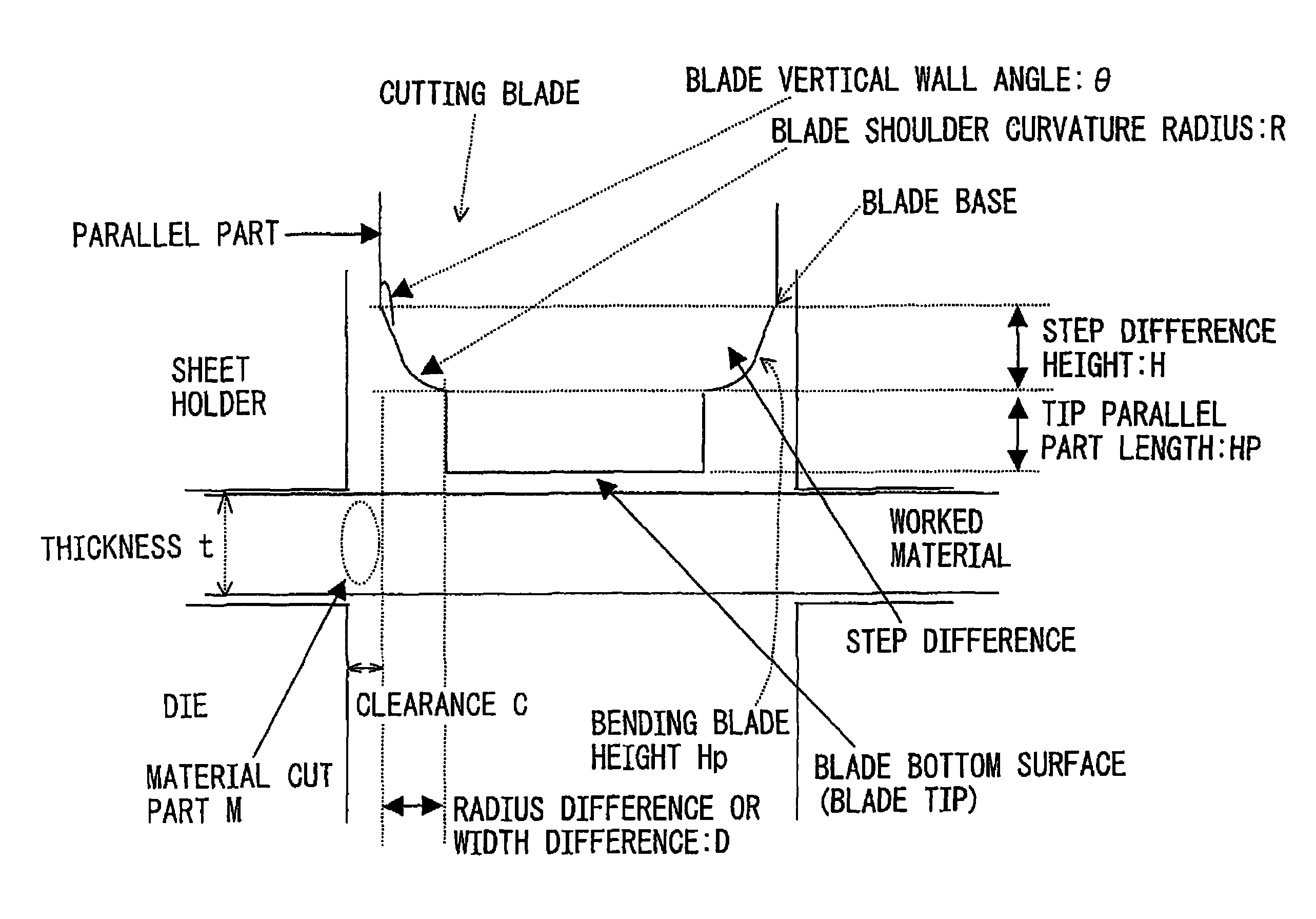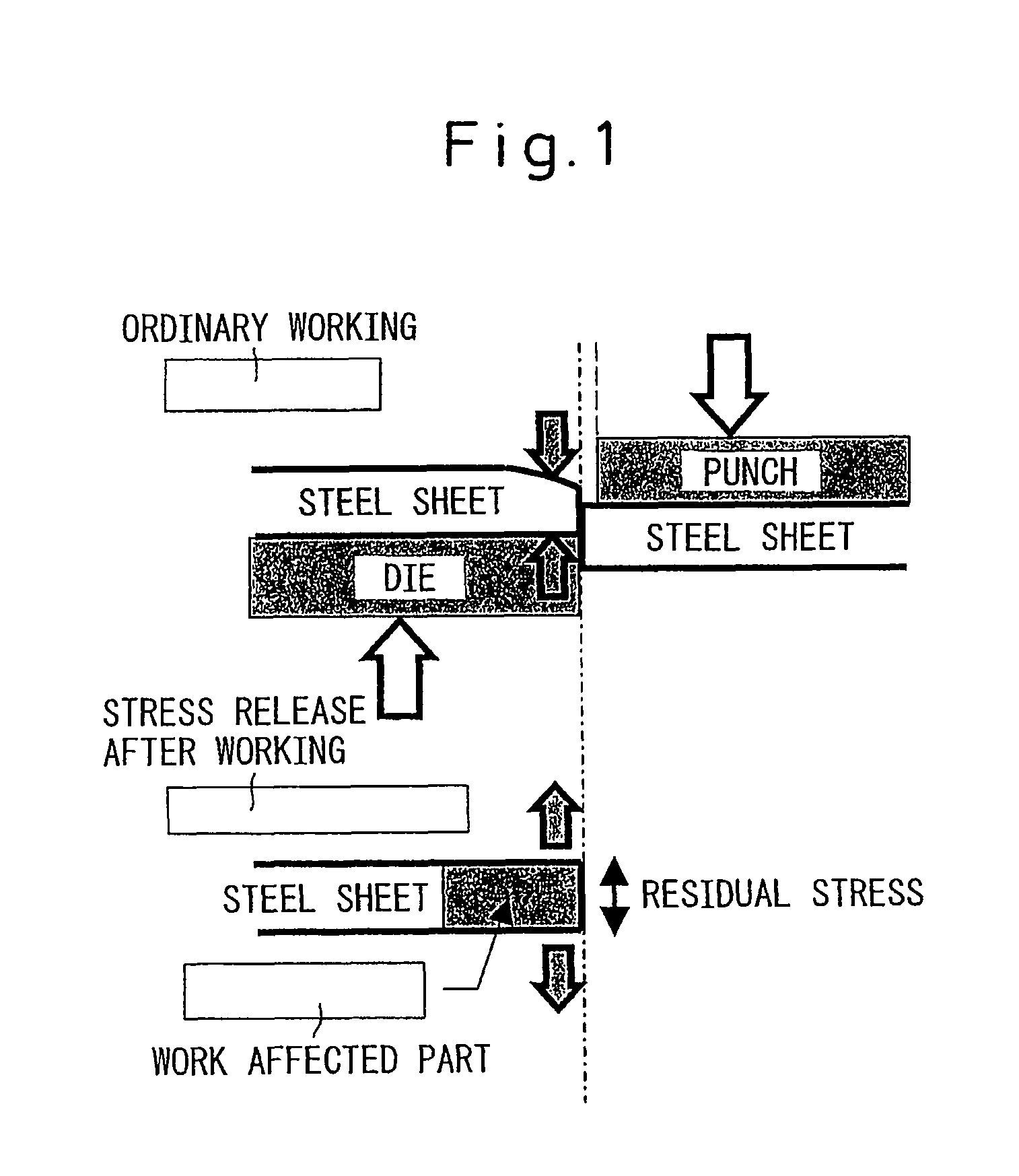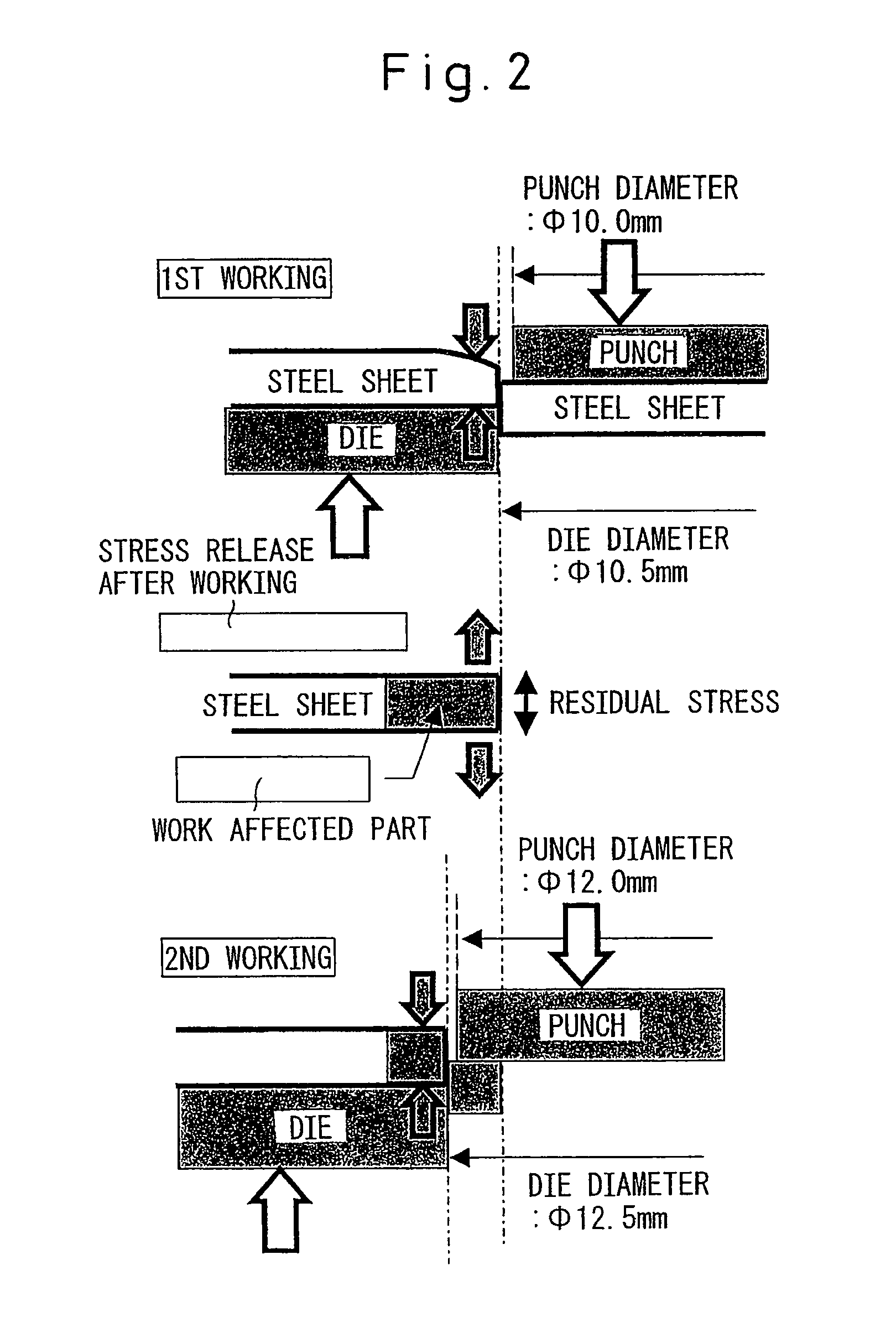High strength part and method for producing the same
a high-strength, part technology, applied in the field of members, can solve the problems of reducing the elongation or r value reducing the formability of steel sheets, and reducing the strength of steel sheets having a high strength, and achieve the effect of superior resistance to hydrogen embrittlemen
- Summary
- Abstract
- Description
- Claims
- Application Information
AI Technical Summary
Benefits of technology
Problems solved by technology
Method used
Image
Examples
example 1
[0127]Slabs of steel having the chemical compositions shown in Table 1 were cast. These slabs were heated to between 1050 and 1350° C. and hot rolled at a finishing temperature between 800 and 900° C. and a coiling temperature between 450 and 680° C. to obtain hot rolled steel sheets having a thickness of 4 mm. Next, these sheets were pickled, then cold rolled to obtain cold rolled steel sheets having a thickness of 1.6 mm. These sheets were then heated to the austenite region of 950° C., above the Ac3 point, and hot shaped. The atmosphere of the heating furnace was varied with respect to the amount of hydrogen and the dew point. The conditions used are shown in Table 2 and Table 3. The tensile strengths were 1523 MPa and 1751 MPa.
[0128]When evaluating punch pieced parts, 100 mm×100 mm size pieces were cut from these shaped parts to obtain test pieces. The center parts were punched out by a F10 mm punch at a clearance of 15%, and the pieces were then secondarily worked under various...
example 2
[0133]Steel slabs having the chemical compositions shown in Table 4 were cast. These slabs were heated to between 1050 and 1350° C. and hot rolled at a finishing temperature of 800 to 900° C. and a coiling temperature of 450 to 680° C. to obtain hot rolled steel sheets having a thickness of 4 mm. Next, these sheets were pickled, then cold rolled to obtain steel sheets having a thickness of 1.6 mm. Further, parts of the cold rolled plates were treated by hot dip aluminum coating, hot dip aluminum-zinc coating, alloying hot dip galvanization, and / or hot dip galvanization. Table 5 shows the type of plating used for various samples. After plating, these cold rolled steel sheets and surface treated steel sheets were heated by furnace heating to the austenite region of the Ac3 point, e.g., to 950° C., and then were hot shaped. The atmosphere of the heating furnace was varied with respect to the amount of hydrogen and the dew point. The conditions used to process these samples are shown in...
example 3
[0139]Slabs having the chemical compositions shown in Table 4 were cast. These slabs were heated to 1050 to 1350° C. and hot rolled at a finishing temperature of 800 to 900° C. and a coiling temperature of 450 to 680° C. to obtain hot rolled steel sheets having a thickness of 4 mm. Next, these sheets were pickled, then cold rolled to obtain cold rolled steel sheets having a thickness of 1.6 mm. Further, parts of these cold rolled sheets were treated by hot dip aluminum coating, hot dip aluminum-zinc coating, alloying hot dip galvanization, and / or hot dip galvanization. Table 5 indicates the legends used for the plating types. After plating, these cold rolled steel sheets and surface treated steel sheets were heated in a furnace to above the Ac3 point, that is, above 950° C. and into the austenite region, then hot shaped. The atmosphere of the heating furnace was varied with respect to the amount of hydrogen present and the dew point. The conditions used are shown in Table 7.
[0140]A ...
PUM
| Property | Measurement | Unit |
|---|---|---|
| melting point | aaaaa | aaaaa |
| tensile strength | aaaaa | aaaaa |
| distance | aaaaa | aaaaa |
Abstract
Description
Claims
Application Information
 Login to View More
Login to View More - R&D
- Intellectual Property
- Life Sciences
- Materials
- Tech Scout
- Unparalleled Data Quality
- Higher Quality Content
- 60% Fewer Hallucinations
Browse by: Latest US Patents, China's latest patents, Technical Efficacy Thesaurus, Application Domain, Technology Topic, Popular Technical Reports.
© 2025 PatSnap. All rights reserved.Legal|Privacy policy|Modern Slavery Act Transparency Statement|Sitemap|About US| Contact US: help@patsnap.com



